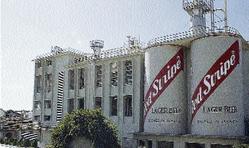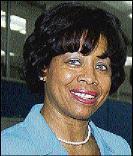
Red Stripe's brewery on Spanish Town Road. - File
Red Stripe, the Jamaican brewers of beer, has blamed a soft economy that slowed demand and rising cost of inputs, including energy and raw materials, for a 26 per cent decline in the after-tax profit for its financial year to June 30.
Domestic sales volume fell, as did exports.
"While it may be true that our brands are price-sensitive, there were other macroeconomic factors, such as inflation, that would have negatively impacted volumes to an even greater extent," said the company's corporate spokesperson, Maxine Whittingham.
But the company, a subsidiary of the British drinks and food giant Diageo Group, says it is already taking steps to slash costs and drive demand for its products in a bid to deliver better returns to shareholders during the current year.
"... Red Stripe is actively reviewing all costs implications that go into producing our brands, and to find ways to drive efficiencies and increase overall costs without compromising the integrity of our brands," Whittingham said in an emailed response to Financial Gleaner questions.
"The business will also be accelerating innovation projects, among other initiatives, but our pricing strategy to competitor brands remains unchanged."
According to recently released results for the review period, Red Stripe returned after-tax profit of $1.042 billion, or $37.11 per share, against $1.409 billion, or $50.14 a share, in the 2006/2007 financial year. Pre-tax profit slipped from $2.093 to $1.67 billion over the corresponding periods.
The fall in profit was despite a 10 per cent hike in turnover to $12.489 billion, driven by price increases, particularly a 33 per cent jump in the price for the flagship Red Stripe lager beer in April.
Even with that jump in price, Red Stripe, which accounts for nearly 90 per cent of Jamaica's beer market - an estimated 7.5 million cases annually - still managed a two per cent increase in volume sales.
However, with the performance of other products being sluggish and foreign markets less than robust, the increase in turnover was not enough to offset rising costs in almost all segments of the business.
For instance, in their report to shareholders, Red Stripe's chairman Richard Byles and managing director Mark McKenzie noted that the company's cost of sales, at $6.6 billion, was up $857 million, or 15 per cent on the previous year.
Red Stripe had to pay more for "energy, raw materials, distribution/shipping and personnel costs", they said.
The company's administrative expenses jumped 29 per cent, or $236 million - to $1.038 billion - reflecting, according to the Red Stripe bosses, "inflationary wage adjustments, new hires and up-weighted personnel training and development".

Whittingham - File
But even as Red Stripe battled with these higher costs, the company pumped 13 per cent more cash, for a year's total $1.493 billion, into marketing.
Domestic market spending
A little under half of that amount, $704 million, or $56 million more than the previous year, was spent in the domestic market to build brand and drive sales. The Jamaican dollar spend overseas increased by 18 per cent, to $789 million.
The return from the effort was, at best, modest and mixed.
Said Byles and McKenzie in their report: "Total sales declined by two per cent. Domestic volume was two per cent lower, as consumers experienced a gradual decline in purchasing power throughout the year.
"Exports to North America were flat year-on-year. Strong performance in Europe was off-set by discontinued shipments to Australia and a marginal decline in Canada and the Caribbean region."
Modest success
The only modest success, therefore, would have been in the domestic market where, according to Whittingham, "the Red Stripe brand grew by two per cent which, under the circumstances, was a strong performance."
Whittingham said Red Stripe could not disclose the specifics, but claimed that "our spirits business has grown significantly" since it took over the distribution sale and marketing of Diageo range of drinks last year from the Lascelles deMercado Group.
Red Stripe, she said, remained confident about the future.
"While it is not our policy to publish projections, we have already initiated a number of initiatives to turn the performance around," Whittingham said. "Our brands are in excellent health and we are confident that with the right strategic moves we can return to growth."
business@gleanerjm.com

